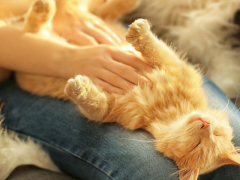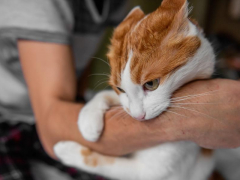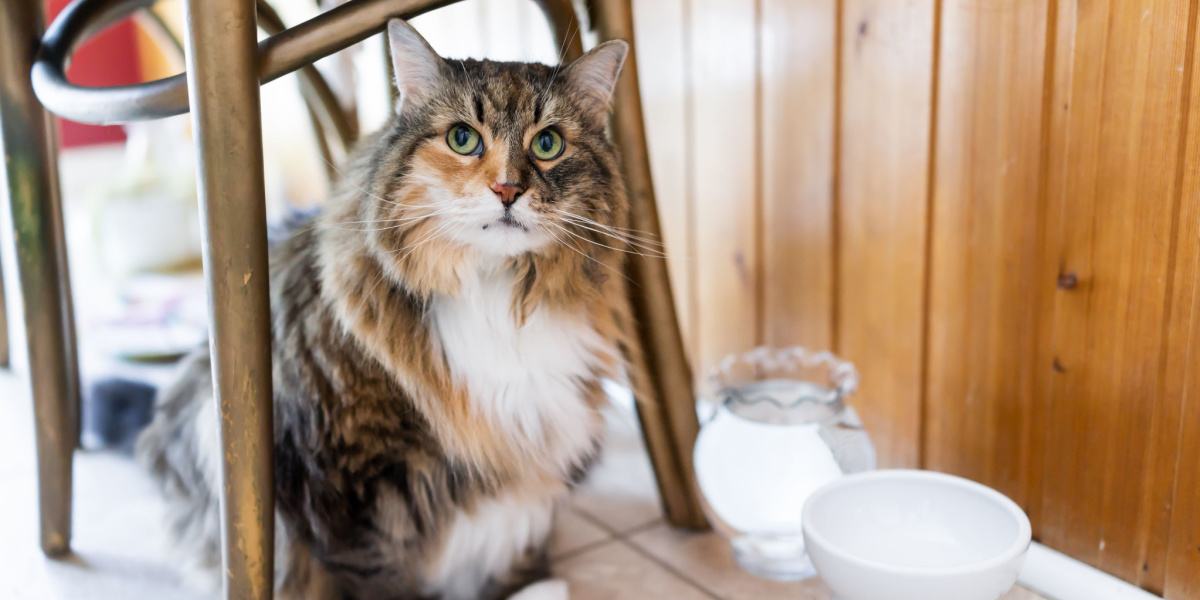
Burying food is not as unusual as you might think. Does your cat cover their food with bedding or paper? Do they indignantly tip over the food bowl when they’re done eating?
Have you seen your cat pawing persistently at the water bowl? Or does your cat scratch around like they’re in the litter box? It can look rather strange and seem a little pointless, but this behavior is an important instinct that many cats struggle to suppress. It could also signal that something is not quite right, and your cat is feeling worried or stressed.
If you’ve been wondering, “Why does my cat try to bury his food?” the answer might be more complex than you first expected. Let’s look at some common theories about why cats bury food and try to explain your cat’s strange antics.
1. Food Burying Is An Instinctive Cat Behavior
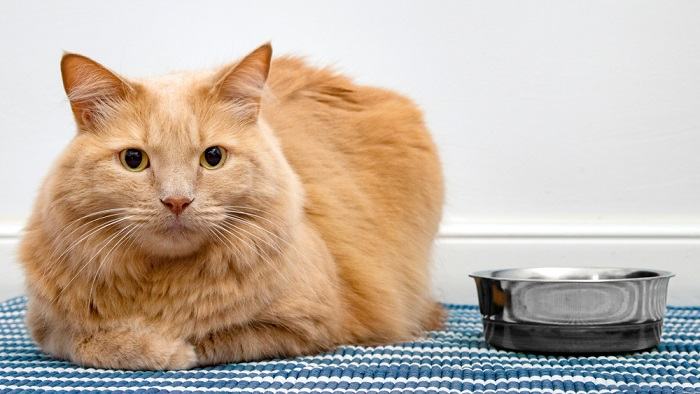
Your cat might feel the need to bury their food without even knowing why.
Cats have many instinctive behaviors: hunting, offering gifts, fighting, mating, and purring to name but a few. It is thought that food burying is not learned from the queen cat when kittens are young. But rather, it is driven by their ancestral roots and is embedded in their genes. So reprimanding your cat for this natural behavior is absolutely not the answer.
Your cat may feel the need to bury their food without even knowing why. Or, perhaps a motive is driving them to perform this task. If there is competition for resources amongst cats in the home, your cat may feel stressed about leaving food out.
Additionally, if a neighborhood cat is giving your cat grief, hiding their food might (in theory) prevent your cat from drawing attention to their territory.
Also Read: How Do Cats Mark Their Territory?
2. Your Cat Is Still Wild At Heart
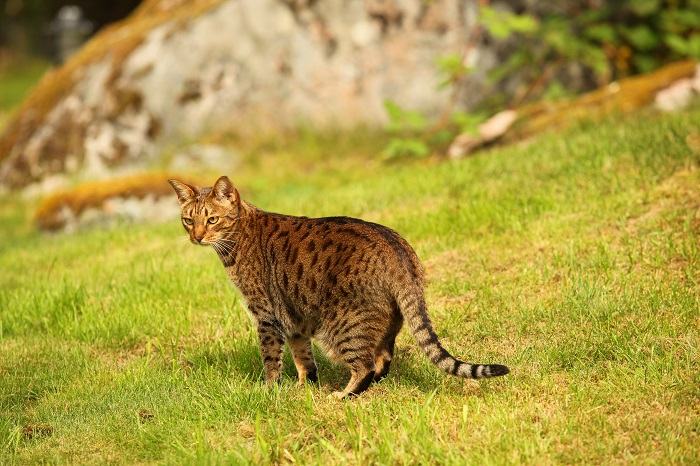
In the wild, food storage, or caching, keeps meat fresher and hides it from scavengers.
Big cat species have been observed to find creative ways to store their food in the wild. Ideal locations are amongst rocks, under vegetation, hoisted into trees, and buried in the ground. Your cat might also find many unusual techniques to hide their food! Once the wild cat’s secret stash is covered, the ground keeps the food cool and, therefore, fresher.
Remember, cats are obligate carnivores that only eat meat. They don’t know when their next hunting opportunity will come and can go for long periods without eating. Every bit of meat is precious. But carcasses go bad pretty quickly if they are left out in the midday heat. So, logic dictates that burial might play a part in keeping the meat fresher for longer.
Also Read: 7 Similarities Between Domesticated Cats And Big Cats
Another motivation for food storage, or caching, is to keep it safe from predators. Food caching is common in many species, from grizzly bears to leopards. Kleptoparasites are animals that try to steal their kill; this is a huge threat to hunters. Leopards will even hoist their prey high into a tree so that they can graze undisturbed over hours or days.
Kleptoparasites survive on the remains of another animal’s hunt. Hyenas and vultures are scavengers, and great examples of creatures that don’t like to do the dirty work themselves. The concealed stores keep the food hidden away to be eaten later.
Caching also disguises the scent of the food. Wild carnivores and scavengers have a keen sense of smell. A nutritious stash might indicate a nearby den full of cubs, so it’s a risky business hanging on to the leftovers.
Also Read: 15 Little-Known Facts About Big Cats
3. He’s Tidying Up!
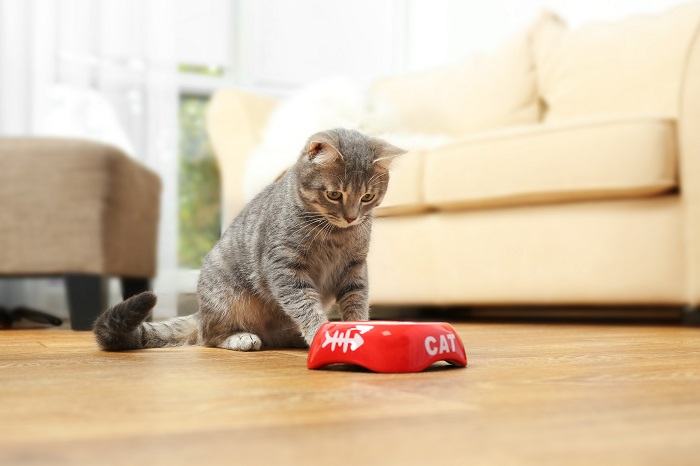
Covering leftover food with a blanket or towel might be a primeval behavior related to removing all traces that the cat has been there.
Domestic cats are renowned for being fastidious in their cleanliness. They love to groom and tidy themselves and will often refuse to lie on an unclean bed or use a soiled litter tray. If your cat has leftover food, some will feel compelled to clear it away.
Perhaps this is also a primeval behavior related to removing all traces that they have been there. Or alternatively, there is an evolutionary benefit to removing rotting meat from their living space.
Flies will be quick to lay eggs and spread disease, so clearing away the mess is most definitely the way forward. Again, leaving any food might attract unwanted feline visitors, so perhaps your cat would prefer to cover their tracks.
If your cat frequently buries wet food, perhaps you are feeding too much. Your cat might be signaling that the leftover food is a surplus and must be stored. It can be tricky to manage this as so many domestic cats rely on grazing to attain their daily calorie intake.
Also Read: Why Do Cats Groom Each Other? Reasons Why Cats Socially Groom
4. Your Cat Is Stressed
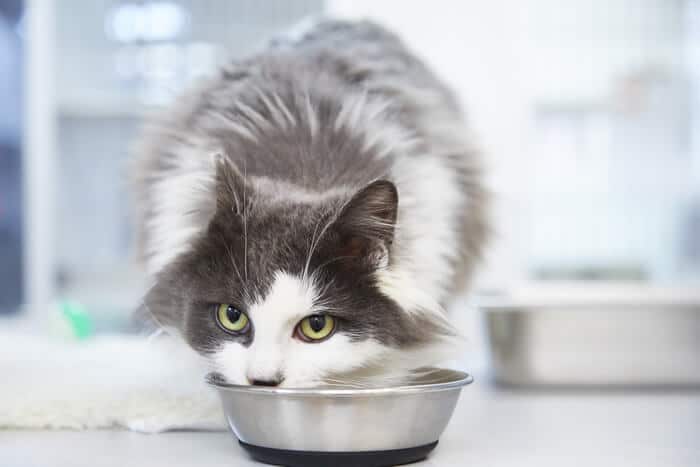
Food burying can be a sign that your cat is experiencing stress or conflict among other cats in the house.
Cats experiencing stress show a myriad of undesirable behaviors. Persistently burying food, particularly before they have even eaten, might be a sign of neurosis and anxiety. Other stress behaviors include overgrooming, inappropriate urination in the home, and hiding themselves away.
Food burying can reflect stress between cats in the household, particularly when there is limited space or unclear hierarchies. This might occur more frequently in house cats that do not have access to the outdoors. Competition over resources, particularly food, can be fierce and cause extreme anxiety.
Other changes inside and outside the home may cause your cat to feel on edge. Read more about stress in cats here.
Also Read: Why Do Cats Bury Their Poop?
In Summary
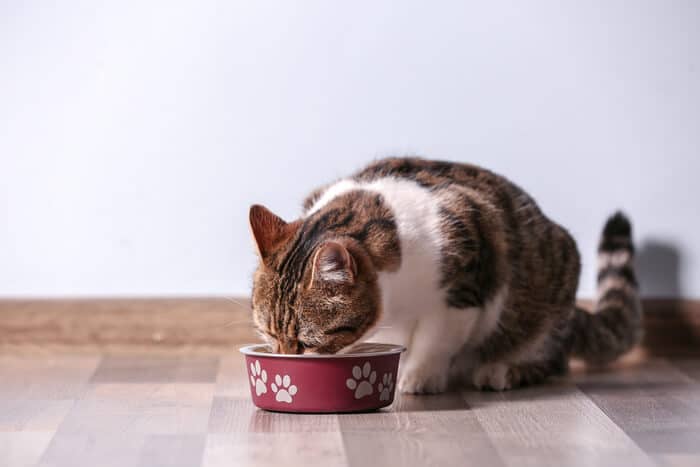
Generally speaking, burying food is a mild behavior that is not necessarily concerning.
Generally speaking, burying food is a mild behavior that is not concerning. Watching your cat embody the actions of their wild counterparts can be fascinating. And let’s admit it, it can also be quite cute. Just be sure there is no evidence that the behavior harms your cat and that they are not hiding food in places you’re unaware of. Otherwise, you might get a nasty surprise a few weeks down the line.
Also Read: The 10 Best Cat Slow Feeders & Puzzle Feeders
-
Balme GA, Miller JR, Pitman RT, Hunter LT. (2017). Caching reduces kleptoparasitism in a solitary, large felid. Journal of Animal Ecology. 86(3), 634-644. Retrieved September 26, 2022.
-
Farhadinia MS, Michelot T, Johnson PJ, Hunter LTB, Macdonald DW. Understanding decision in a food-caching predator using hidden Markov models. (2020). Movement Ecology. 8(9). Retrieved September 26, 2022.


